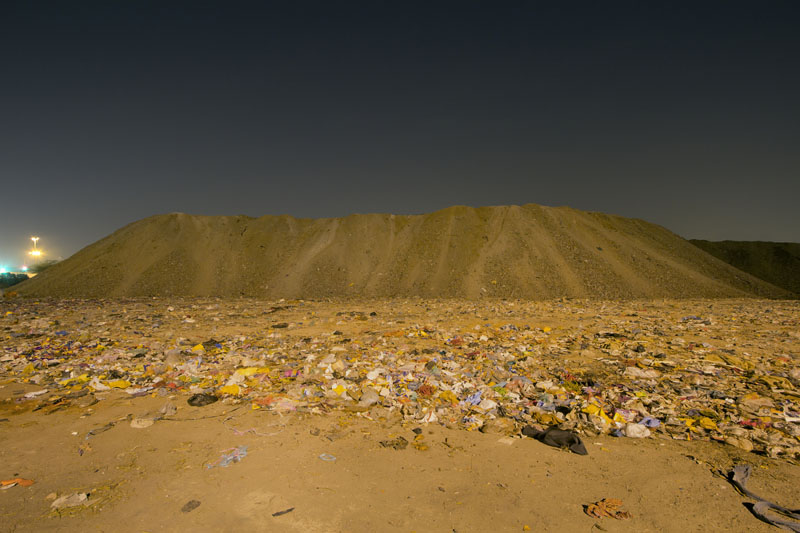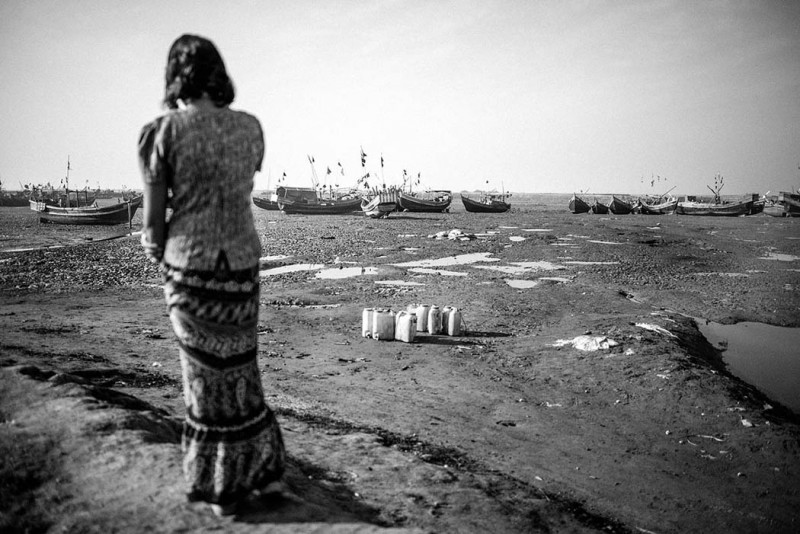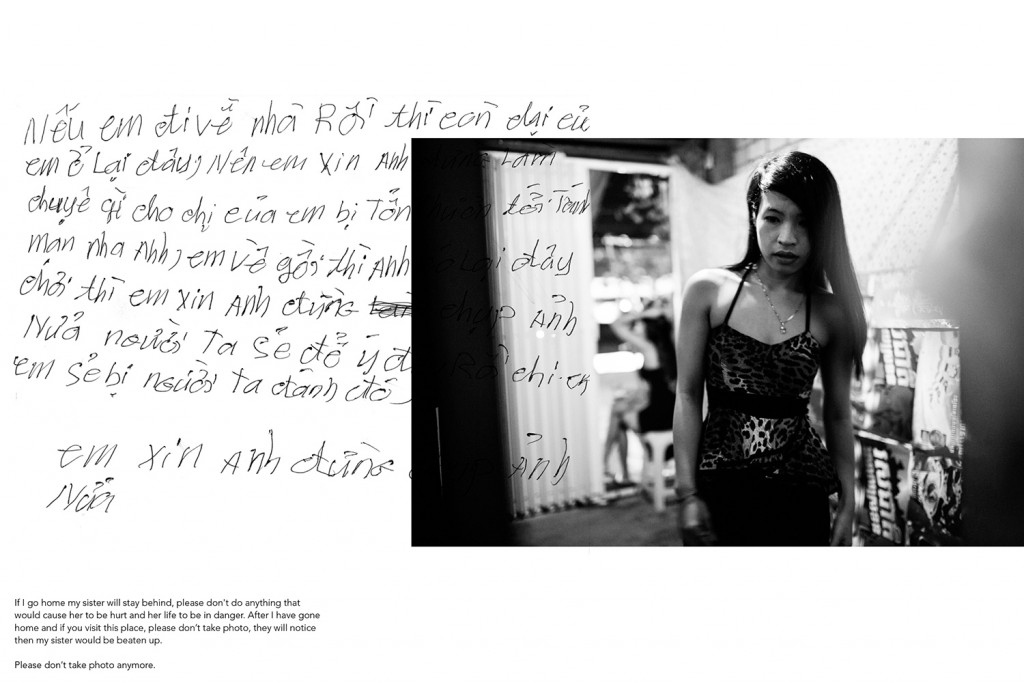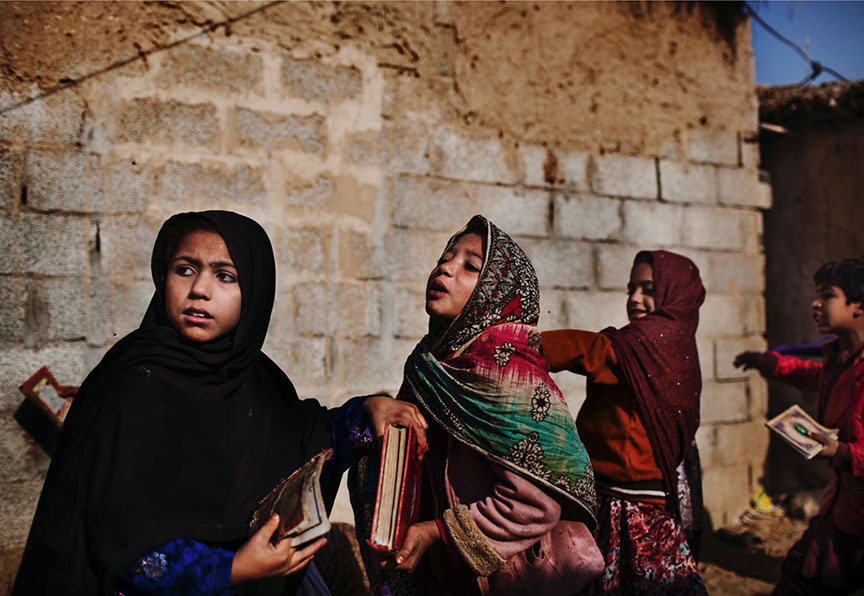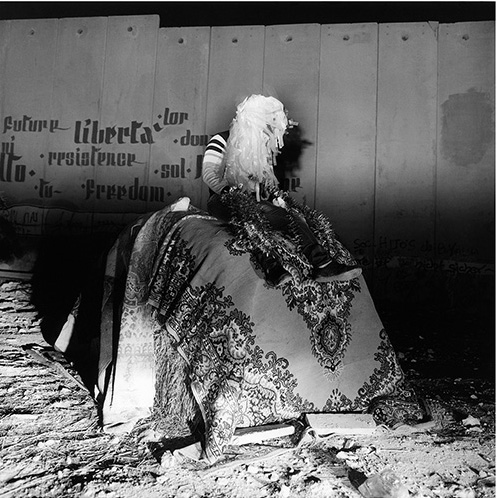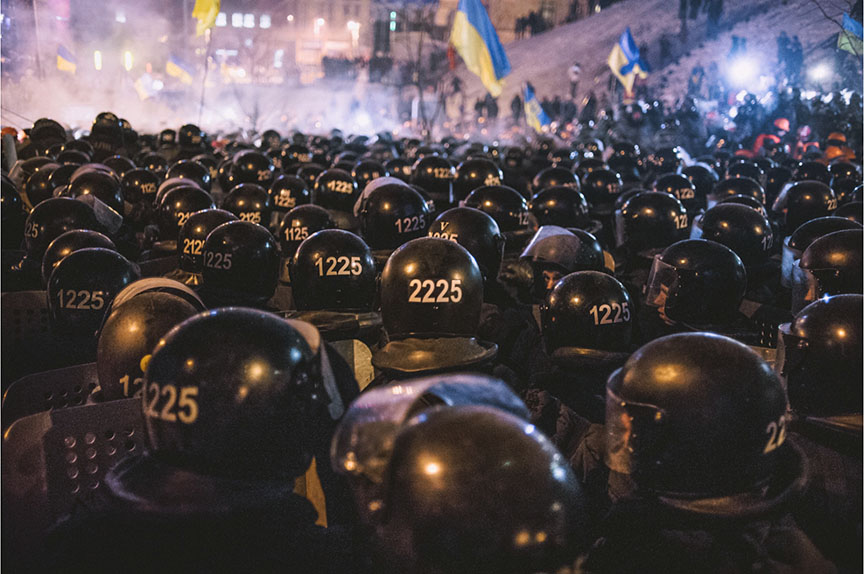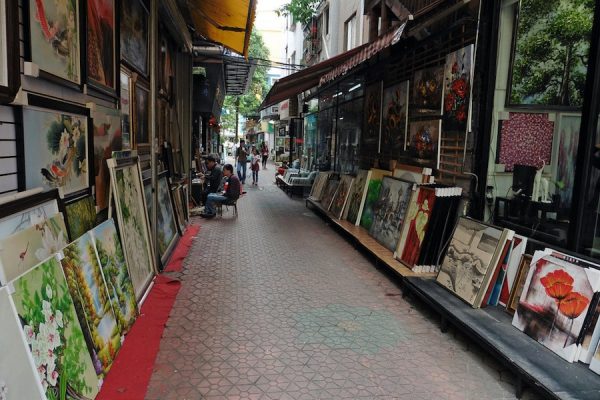The Delhi Photo Festival is a celebration of international photography, with its third edition as India’s biggest festival of its kind running from October 30th to November 8th this year at the Indira Gandhi National Centre for the Arts.
Cutting across the spectrum of geographies, economic status, cameras and human contexts, the festival uses photos as an art form of expression, not only to showcase the very best photos from around the world, unrestricted by genre, but to educate, initiate dialogue, and create a community of photography lovers and practitioners.
We bring to you our favourite photographs which will be on display during the event.
Arun Vijai Mathavan, India (National Institute of Design, India)
Urban Mountains
In 2007, for the first time in human history, more than 50% of the world’s population is living in urban areas. In India especially, the large mega-polises of Delhi, Mumbai, Calcutta etc accommodate thousands of new migrants everyday. The challenges for these cities in providing space, housing and work all pale however in comparison to the biggest challenge of all: Waste.
Christian Werner, Germany
74
The Yazidi religion is one of the oldest. Since its founding years 74 genocides have been committed against them. The latest and most systematic done by the IS terrorist militia. Since the invasion of the IS terrorist militia in Iraq, hundreds of thousands Yazidis were uprooted and are on the run. Thousands of men and boys were shot and beheaded women abducted and sold at auction as sex slaves. In adverse circumstances they have erected makeshift shelters, where they found just enough room. Only a few have made it into the camps set up by NGOs. Most live in the reinforced concrete skeletons of unfinished houses, improvised in tents made of tarpaulins and branches or on the road.
Until the beginning of the year 10,000 Yazidis were encircled in the Sinjar Mountains of the IS militia. Over 4 months, they fought with little food, little ammunition and weapons to survive until the Kurdish Peshmerga free fought a land corridor.
Micheal Drost-Hansen, Denmark (Danish School of Media and Journalism, Denmark)
Rohingya
Since the Rohingya lost citizenship the Rohingya Muslims in Burma’s western Rakhine province has been exposed to something resembling ethnic cleansing. The Rohingya in Burma now live in government-controlled prison-like camps for internally displaced people just a few kilometers from their former homes.
Their only way of escape is the Bay of Bengal in homemade boats.
Ian Flanders, Australia
By the River
After three long years, Ian had something a lot more valuable than a gritty photographic expose of the sex-slave industry in Cambodia. He nervously handed over all recorded photos and evidence to the NGO’s and hounded them for action. On November 12th 2014, the shacks were raided and eight women and three children were rescued, while two traffickers were charged and prosecuted. Unfortunately, many of the women returned to the only thing they knew, to their addictions and to where the pressure to change disappeared and things made sense. There were times during this journey when Ian felt like a man on a meaningful mission, a champion of humanity! But the rejection of freedom from enslaved prostitution by most of these young women also left Ian feeling naïve and privileged.
Jeremie Lenior, France
Borders
As the product of political and economic processes, the contemporary landscape has evolved today to disappear into its own constraints. The non-places are nowadays multiplying themselves into globalized patterns, while saturated urban peripheries are compartmentalized in impersonal and dehumanized architecture. Gathering photographs from several projects realized between 2011 and 2014 on very small parts of the French territory, “BORDERS” is studying the urban /rural frontier. These places of tensions, these zones “at the periphery” reveal our landscapes evolution and question, through them, the identity of the society we are currently building.
Karolin Klueppel, Germany
Maedchenland
The indigenous Khasi people of Meghalaya, India, are a matrilineal society. The line of succession passes through the youngest daughter. This guarantees girls and women in Meghalaya a unique economic and social independence compared to general Indian conditions. Between 2013 and 2014 I spent nine months in Mawlynnong, a Khasi village of just 95 dwellings. In this series I concentrate on the girls themselves in contextualizing them in their everyday physical environment through a sensitive balance between documentation and composition.
Kishore Parekh, India
Birth of a Nation
Kishore Parekh’s seminal work on the Bangladesh War and Liberation in 1971.
MD Farhad Rahman, Bangladesh (Pathshala, South Asian Media Institute, Bangladesh)
One Last Playground
This is a story of a fantasy world of a group of children near suburb of Dhaka, Bangladesh – a world that was created by filling water-bodies, a world in transition that existed for just a few days. The place will soon be transformed into a construction site within a few days. This is the only remaining playground for the local children.
ME-MO Magazine, France, Spain & Italy
Fear
This exhibition explores different facets of fear through the lenses of the 5 founders of MEMO.
Manu Brabo, Jose Colon, Diego Sanchez Ibarra, Guillem Valle, and Fabio Bucciarelli get us closer to the fear of war, of falling behind bars away from your land, the fear that the economy will make you lose everything, to substitute education for bombings or that your identity will throw you to the limbo of the pariahs.
Olivier Culmann, France
The Others
Developed in 4 phases, The Others” is a project that seeks to explore the codes formed in the process of creation of the individual that everyone aspires to be.
I chose to incarnate myself in the form of self-portraits, using the various techniques of iconographic creation commonly used in India, in order to recreate the building process of self-image from its very first stage. With this photographic and virtual journey, I try to explore the limits of photography by questioning the construction of social status through practices of self-representation.
Sarah Fatemeh Jabbari, Iran (Faculty of Fine arts, Jamia Millia Islamia, Delhi)
Waiting For Better Days
Negoor is one of the oldest cities, and the most extensive and farthest state in Baluchistan province of Iran located in the southeast part of the country near Pakistan border and Gulf of Oman. This is a city that is deprived of primary facilities like a hospital, suffers from a severe poverty, with lots of jobless people, and addicted youth. The rate of literacy is low and being a close community there are many social crimes like dealing drugs, alcoholism and illegitimate relationships here.
I started taking photos of a family who have faced many problems, cultural, social and mostly financial. Yet they were trying to improve the way of their lives, waiting for better days.
Soham Gupta, India
Angst
Angst is my reaction to the trial through which weaklings must pass in our society.
Verena Andrea Prenner, Austria
Contained
The work deals with taxi drivers in Palestine, the changes of living and working conditions since the Israelis built the so called Securuty Wall. It is a combination of an artistic photography work combined with a sociological interviews. Through the interviews the idea of the photography project arose. Referring to the statement “We feel like animals in a zoo”, animal costumes for the photographs made out of waste and used plastic bags were created.
Maxim Dondyuk, Ukraine
Culture of Confrontation
Winter 2013 changed Ukraine. 3 months of bloody clashes, tears, fear, Molotov cocktails, burning car tires and deaths. It already wasn’t just a protest in the support of EU. Ukrainian revolution brought new spirit, changed people and their minds, they became one organism that fight with a great passion and intensity for happy future.
From the very beginning Euromaidan turned into a real performance, where started the battle of opposites. Good and evil, light and shadow, thick black smoke and whiteness of the February snow, orange helmets against black. On the revolutionary canvas creepy bloody scenes interwove with incredibly beautiful, from visually side, views. Euromaidan became one of the most beautiful revolutions, like scenes from Hollywood film.
Sarkar Protick, Bangladesh
Love Me or Kill Me
Dhallywood is a wild cinematic genre overflowing with noble heroes, epic danger, and ludicrous levels of glitz and glam. Thrilling stories and legendary romances have been told through Bengali cinema of Bangladesh since 1956, with some 100 Dhallywood movies released every year. Sarker Protick takes us onto the sets and into the studios for an intimate look at the campiest films imaginable in his series “Love Me or Kill Me”.
Simon Wheatley, UK
Arunika
In 2011 I found myself spending a lot of time on the streets of the strange and edgy northeast Indian town of Dimapur, where my daughter was born in the house of a family of yogis I had married into, in my quest for a purer life with deeper meaning. The pictures I have made in Dimapur reflect both the tranquility of my new life and also the harsh world into which I have brought a daughter. This work is a reflection of the time when I became enchanted by photography again after some time away from serious practice of the medium, work I am still trying to understand.
Vittoria Mentasti, Italy
A Woman with Two Names
A Woman With Two Names explores Native Inuits’ modern way of life and social challenges in Nunavut, a large region in the Canadian Arctic.
In 1999, the Canadian Government officially recognized the independence of the Nunavut Territories. The Native Inuit are now asked to speak for themselves and participate in the development of their own communities. The legacy of abuse still haunts those living today in a cycle of violence, which is self destructive and directed towards loved ones. The many social ills that afflict the population act like a chain, linking generations as they branch out through families and communities. I followed the chain, bringing light to the love and violence that they experience as they yearn to find a place between old traditions and the modern world.



